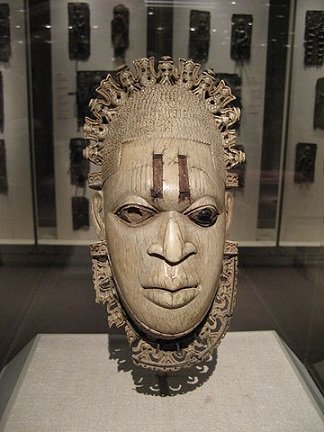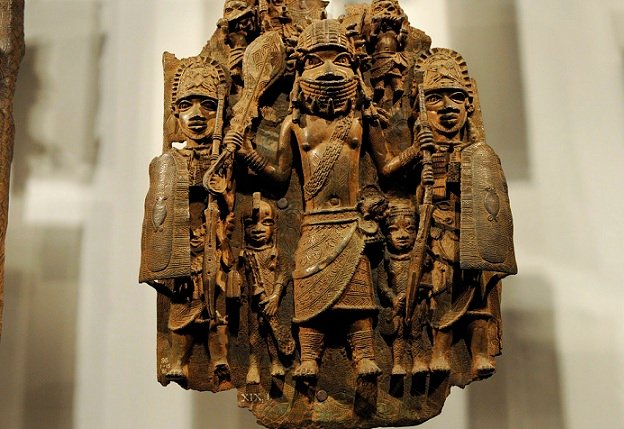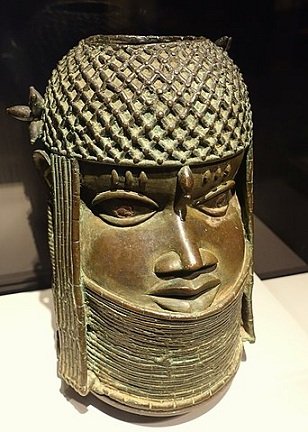ADSactly History : History Of Southern Nigeria [Part 3] - Bini In The Pre-colonial Era
In our last two posts (part 1 and part 2), we did a survey of two politically influential tribes in Southern Nigeria; the Yoruba and the Igbo tribes and we looked at their origin and socio-political organization in the pre-colonial time. In this episode, we will be looking at another tribe in the Southern Nigeria; the Bini Tribe.

Bini Tribe
Bini is a very strategic tribe in Southern Nigeria and is predominantly found in Edo state (kingdom of Benin in Nigeria), parts of Delta state and even in Rivers state. During the pre-colonial times, the Bini tribe played a very strategic role that charted the course of Nigerian history. It will interest you to know that the first contact made by Europeans in Nigeria was in Bini (this was around the 15th century AD). The two foremost Europeans (Portuguese) to arrive in Nigeria in the 15th century were Ruy de Sequeira and Alfonso de Aviero.
Asides receiving the Europeans, the kingdom of Benin (Bini tribe) is regarded as the first Nigerian tribe and also in the entire west African sub-region to exchange ambassadors with the Portuguese. During that time, the Portuguese were regarded as a major European power.
Origin of Bini
We will take a look at the origin of Bini tribe. Just like the other tribes we have looked at in the previous episodes, Bini has many accounts of their origin but we will look at a few that have been generally accepted by Bini history scholars.
The version of Igbafe
This is a creationist account. It has been believed by some Bini people that the almighty creator (Osanobua) sent his sons to the ancient kingdom of Benin to populate the place and among the sons sent was Bini (the youngest son of of Osanobua). While being sent to the ancient kingdom of Benin, Bini was given a large snail shell containing sand.
When Bini arrived the earth, he discovered that almost the entire face of the earth was covered with water. He was advised by a mystery bird to pour the sand from the large snail shell unto some parts of the water. He did and that was how lands were formed. It was on this land that the kingdom of Benin was formed. At first, the land was so large that he had to sell parts of it to his elder brother who later became the king of Ife (remember we talked about Ife in the Yoruba origin). It is worthy to note that, as a creationist account, this account does not fit into the ideology of evolutionists and is void of scientific explanation - though it has been generally accepted by Bini people as part of their "oral tradition".

The version of Ogiso
The initial period of the history of the Bini people in the ancient times was called "Ogiso era". The name came from the rulers of the ancient Bini tribe who were called "Ogisos" - (literarily translated to "King of sky"). the first ever ruler (Ogiso) of the ancient Bini was "Igbodo" and the last was "Owodo". These were the kings known to have established the Ogiso dynasty and they had sovereign reign in ancient Bini.
It has been believed that Owodo fought his way through many kingdoms and noblemen for the establishment of this dynasty. Owodo had many sons and among them is Ekaladeran who established a very strategic port-town in ancient Benin kingdom called "Ughoton". Ekaladeran's son; Oranmiyan; founded the Eweka dynasty and this was how the Bini tribe expanded during the pre-colonial times. The reign of the kings of sky came to an end and the Ogiso dynasty translated into a republican and for the first time, the ancient Bini kingdom had a choice of leadership.
This marked the end of the celestial reign in Bini (because the Ogisos were majorly regarded by many as being celestial). The Benin kingdom established a monarchical system of government with the king (Oba) having the center of authority. Even till this present time, throughout the land of Benin (and Edo state), the Obas are seen as the mace of authority.

Bini Administration and Socio-political Organization
The people of Bini, during the pre-colonial time, had a political structure that had the Oba (king) as the head and center of authority. An Oba was usually succeeded by his eldest son (this is a primogeniture monarchical system). Apart from being the head and center of the government, the Obas were also seen as religious leaders and, sometime, divine being. Though in the real sense, they are not divine, but they are believed to posses the spirits of their forefathers.
During the ancient Bini, there was a great distinction in classes within the society. The high-ranking class and the nobles were called "Adesotu", while the commoners were regarded as "Ighiotu". The noble class wielded great authority and some of them were drafted into the Oba's cabinet. Among the noble class, they were further divided into three sub-classes: The "Eghaevbo n'ogbe" - These were the palace chiefs and king-makers. There was also the "Eghaevbo n'ore" - they were the town chiefs and the head of various communities. The last one was the Uzama.
For the Ighiotu that were not among the noble men, they were divided into various sub-classes according to their profession or trade, like the blacksmith, meat butchers, trado-medical doctors (herbalists) etc. Even among these sub-classes, there were heads of each of them that were answerable to the Adesotu and ultimately to the Obas. One very unique characteristic of the monarchical system of the Bini is the hierachical structure they exhibited, even till this present time, a trace of this feature has remained.
Authored by @samminator
Click on the coin to join our Discord Chat

Witness proposal is here:
Go To Steem Witness Page
In the bottom of the page type: adsactly-witness and press vote.

Use small letters and no "@" sign. Or, click here to vote directly!
Thank you!
It is interesting that in many of the peoples with very deep roots, these class divisions still remain. I have known some tribes where these differences between one group and another, between families, are very marked. For example, all tribes have a kind of doctor-priest, who is respected and consulted in everything. I also find it interesting that the Beninese tribe has had contact with the Portuguese, which leads me to think about their language, their culture; to know if they have an influence of the Portuguese. I find it fascinating to soak up these African peoples, so unknown to me. Greetings, @samminator.
Thanks for the comment, Nancy.
The contact made by the Portuguese to Bini was majorly to the Oba and the noblemen.
The main purpose was trading; which included artefacts, Ivory, and other antiques. Sure their contact had influence in their culture
The creationist story of the Bini tribe is very striking. It has in common with others the sending of the son of the eldest God, but it is singularized by that resource of the shell with sand. It is also common in other cosmogonies that everything is covered by the waters; what is attractive in this narrative is how the lands are created by means of the sand poured by Bini on the waters. Knowing this is already satisfying to me. The other part is history, and in it we find what is reiterated in other cultures or primitive societies: the division into social strata, the hierarchy, and so on.
Thanks for your post, @samminator.
Thanks a lot buddy.
Yeah, some of these creationist stories are somewhat related, with the focal point being "the world was created by a supreme being". Even though it does not cover scientific disciplines, this oral tradition has been held strongly by many people.
Bini tribe book I have read nice true histro
Posted using Partiko Android
This is a greta series. I am enjoying every bit of it.
One thing that impressed me was the images of the Bini art. So sophisticated, so detailed. I had not seen african sculptures like these ones.
This along with the description of their socio-political organization makes us really reconsider all our assumptions about african inferiority.
If anything, the suffered of the same issues that brought most european monarchies down.